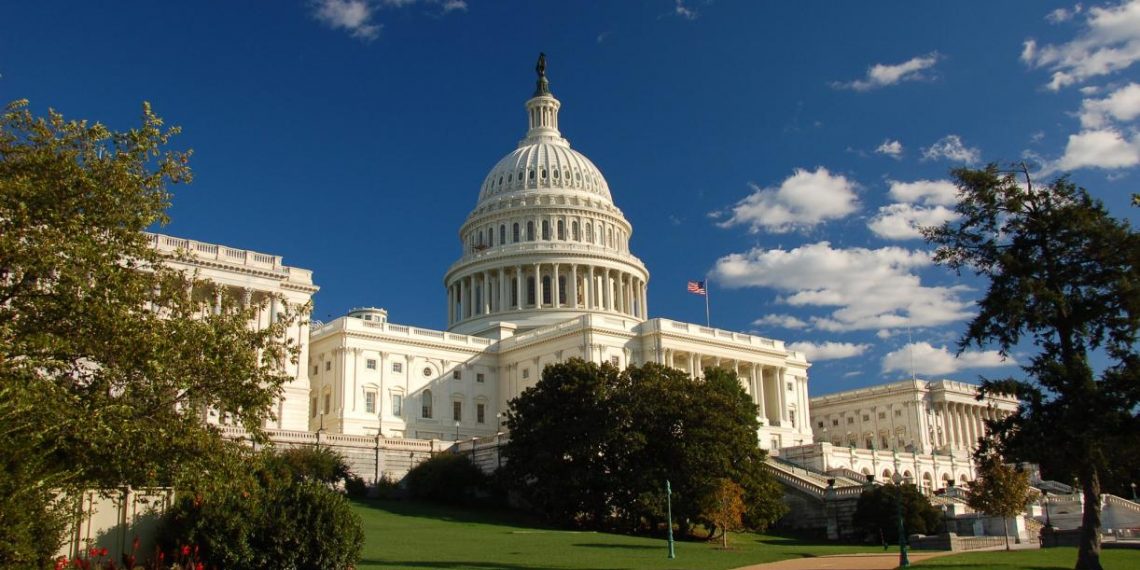Removing carbon from the air through technological means is an essential tool to help keep temperature rise below 1.5 degrees C (2.7 degrees F). Creating a robust and long-term market for technological CDR can spur innovation and accelerate deployment while scaling up a commercially viable sector in the long term. Leveraging the purchasing power of the federal government to create that market can directly remove millions of tons of carbon dioxide from the atmosphere and direct and monitor growth in a way that creates good jobs and prioritizes equity and verifiable removal outcomes.
The Federal Carbon Dioxide Removal Leadership Act — introduced by Representative Paul Tonko (NY-20) and Representative Scott Peters (CA-52) in the House and Senator Chris Coons (DE) and Senator Sheldon Whitehouse (RI) in the Senate — would:
- Direct the Department of Energy (DOE) to use technology-based approaches to annually remove an increasing amount of carbon dioxide, culminating in removal of 10 million net metric tons of carbon dioxide on a lifecycle basis starting in fiscal year 2035.
- Support a diverse portfolio of viable CDR projects — including a special carve-out for small-scale projects.
- Prioritize projects that deliver economic opportunity to areas likely to be impacted by the transition away from fossil fuels; emphasize public engagement and community benefits; and quantify and mitigate any environmental justice impacts.
- Instruct DOE to ensure that best practices for monitoring, reporting and verifying carbon removals are applied to any funded projects.
Why This Legislation Is Important
Alongside immediate and significant emission reductions, enacting policies that will increase global technological CDR capacity is critical to meet the scale of CDR needed to stay below 1.5 degrees C (2.7 degrees F) of global warming. That means that to avoid the worst impacts of climate change around the world — from increasingly deadly extreme weather events to dramatic sea level rise — we need to rapidly grow the technological carbon removal sector. But technological CDR is a new industry based on the market value of removing carbon from the air, which is artificially low today without a carbon price accounting for the costs of climate change. It can be expensive, and it needs reliable customers that want to pay for its climate services so it can expand and reduce costs.
The federal government has the capacity to be a transformational customer for technological CDR. Long-term, dependable federal purchasing of technological CDR, as proposed in the Federal Carbon Dioxide Removal Leadership Act, would serve as a significant and reliable source of demand for this new market, accelerating CDR deployment in the U.S. The federal government also has the responsibility to lead the way in this emerging industry, given the disproportionate level of emissions the U.S. is historically responsible for.
Further, the government can and should require contractors to responsibly use those federal dollars to deliver demonstrable results across a range of national priorities outside of climate, such as equitable economic development, and high-road labor practices. Federal CDR procurement should pair with policies that ensure its long-term efficacy, manage and mitigate any negative impacts and maximize the benefits of resulting economic opportunity for underserved and over-polluted communities, and communities negatively impacted by the clean energy transition. Requirements and prioritization around equity, environmental integrity and responsible growth, like those in the Federal Carbon Dioxide Removal Leadership Act, are one tool for ensuring CDR contributes to an equitable net-zero transition, and could help set precedents for operation across the industry more broadly.



